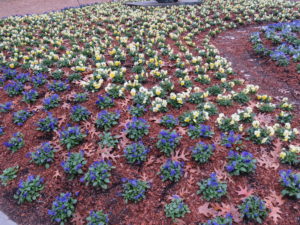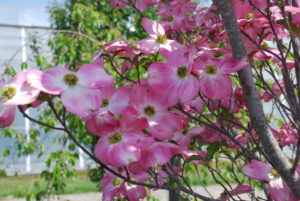This past weekend Northeast Tennessee as well as most of the coastal eastern U.S. was hit by heavy snow, 7 inches and more of heavy, wet clinging snow. Many of my neighbors lost electric power, telephone and cable.
A driveby survey of tree damage around the neighborhood found that the following tree species suffered the most breakage (in order of severity):
- Chinese (Siberian) elm
- Silver maple
- White pine
- Weeping cherry (pictured)
- Topped trees
- Bradford (callery) pear
- Red maple
- Dead or dying trees
- Sycamore (London planetree)
- Southern magnolia
- Sweetbay magnolia
- Yoshino cherry
- Dogwood
The type of injury ranged from large falling limbs two inches or more in diameter (Chinese elm, white pine, and silver and red maples) to many small branches less than one inch diameter (weeping cherry. magnolias and dogwoods).
Lessons learned:
- Select a tree species that is reliably storm resistant. Expect some limb breakage on any tree species, but fast growing trees like Chinese elms and silver and red maples, and those that are not properly maintained, suffer the most damage. When homeowners properly prune landscape trees every 5 years, storm damage is considerably less.
- Old mature trees, which have outlived their expected life span, should be removed and replanted with younger specimens. For example, Chinese elm, silver maple and white pine reach full maturity within 40 years. Bradford pear has a short replacement time of 15 years. Pruning maintenance on all landscape trees should be every 5-7 years.
- Topped trees suffered considerable limb losses as the weakened re-growth is exceptionally susceptible to breakage. The topping of trees is never a recommended practice. In my opinion, if a large tree threatens your home, personal property or utility lines, either seek care advice from a professional arborist or have the tree removed by a licensed and bonded arborist.
- Previously dead or dying trees pose a bigger hazard during in a storm.






